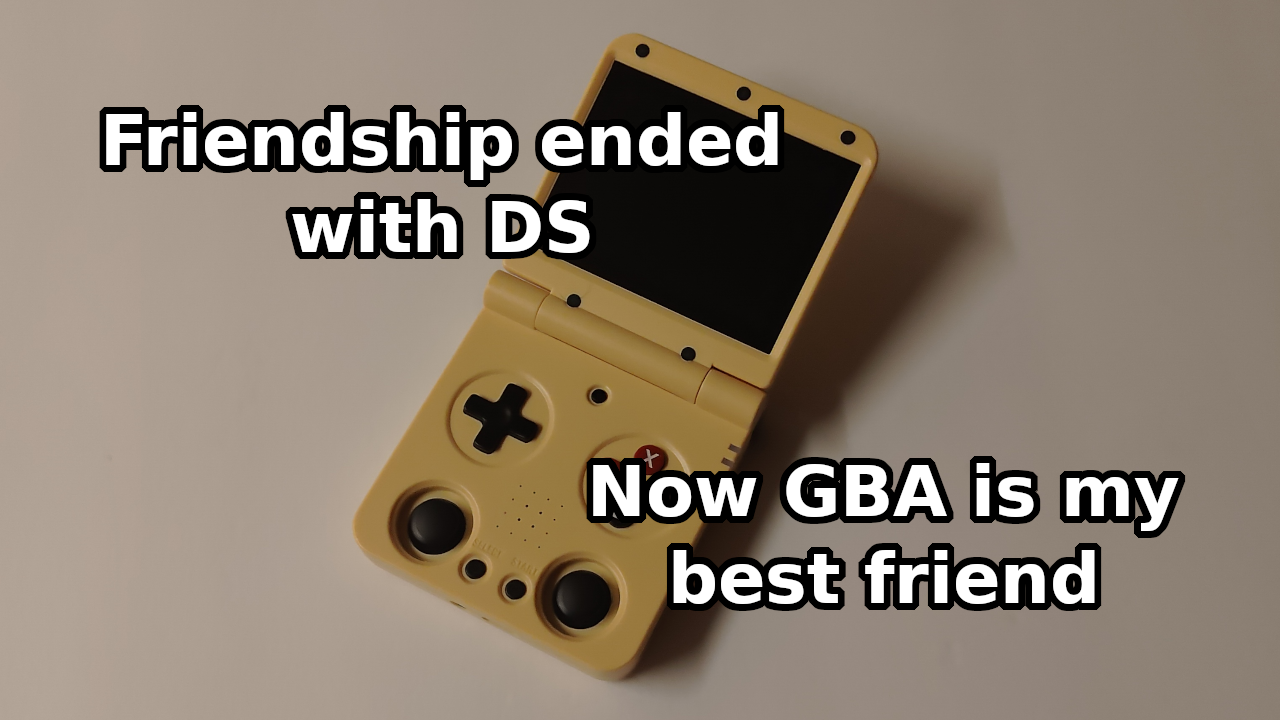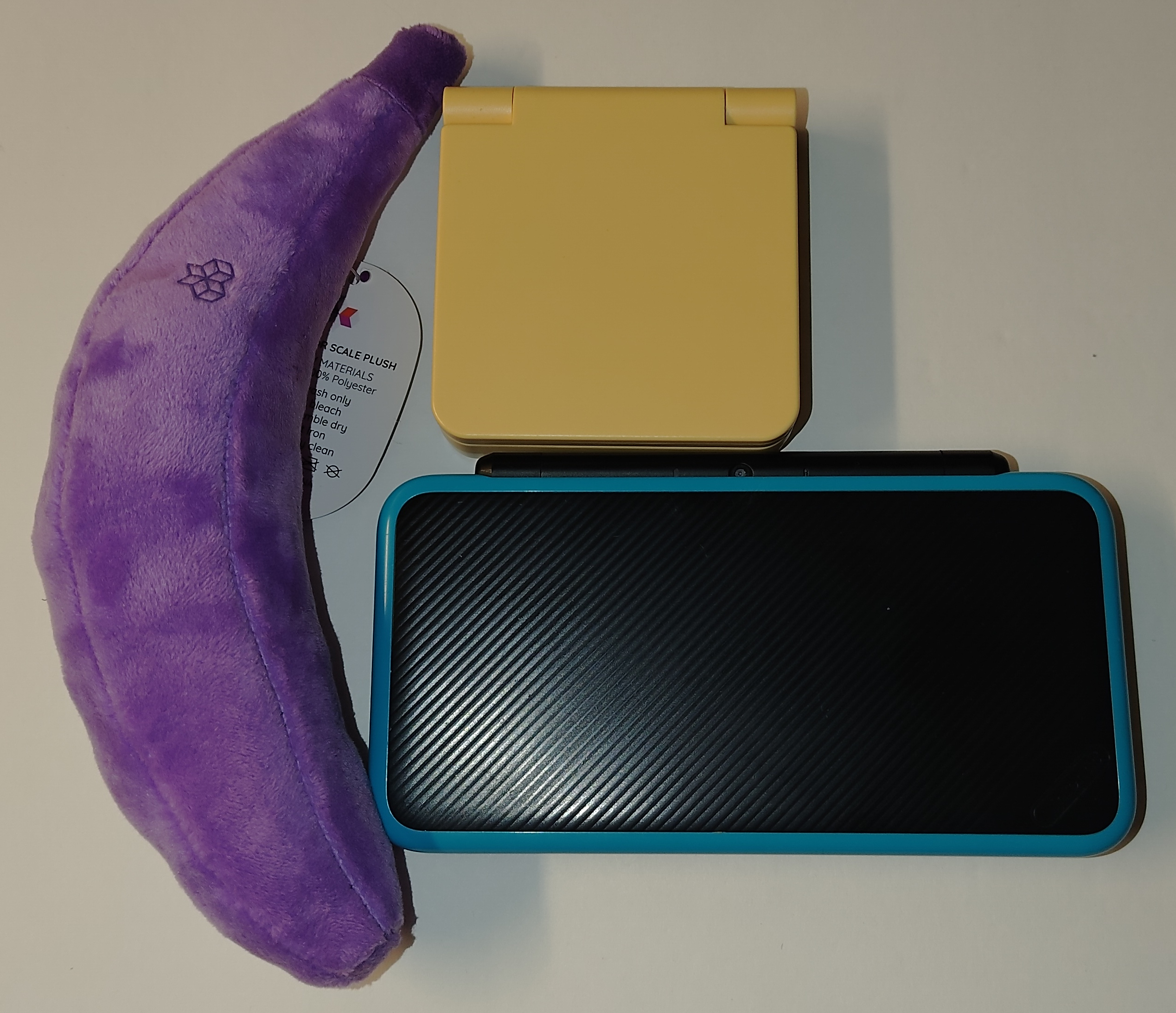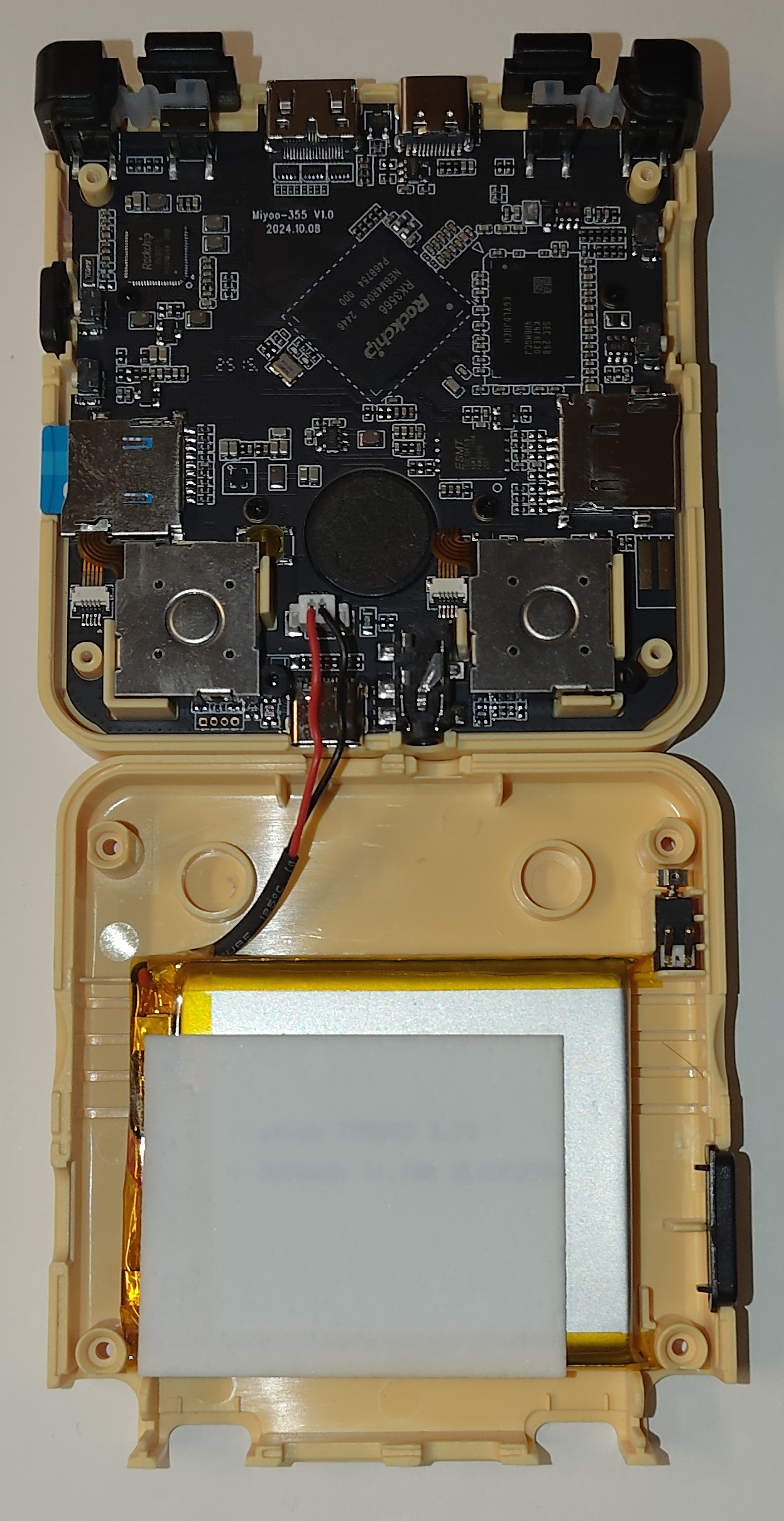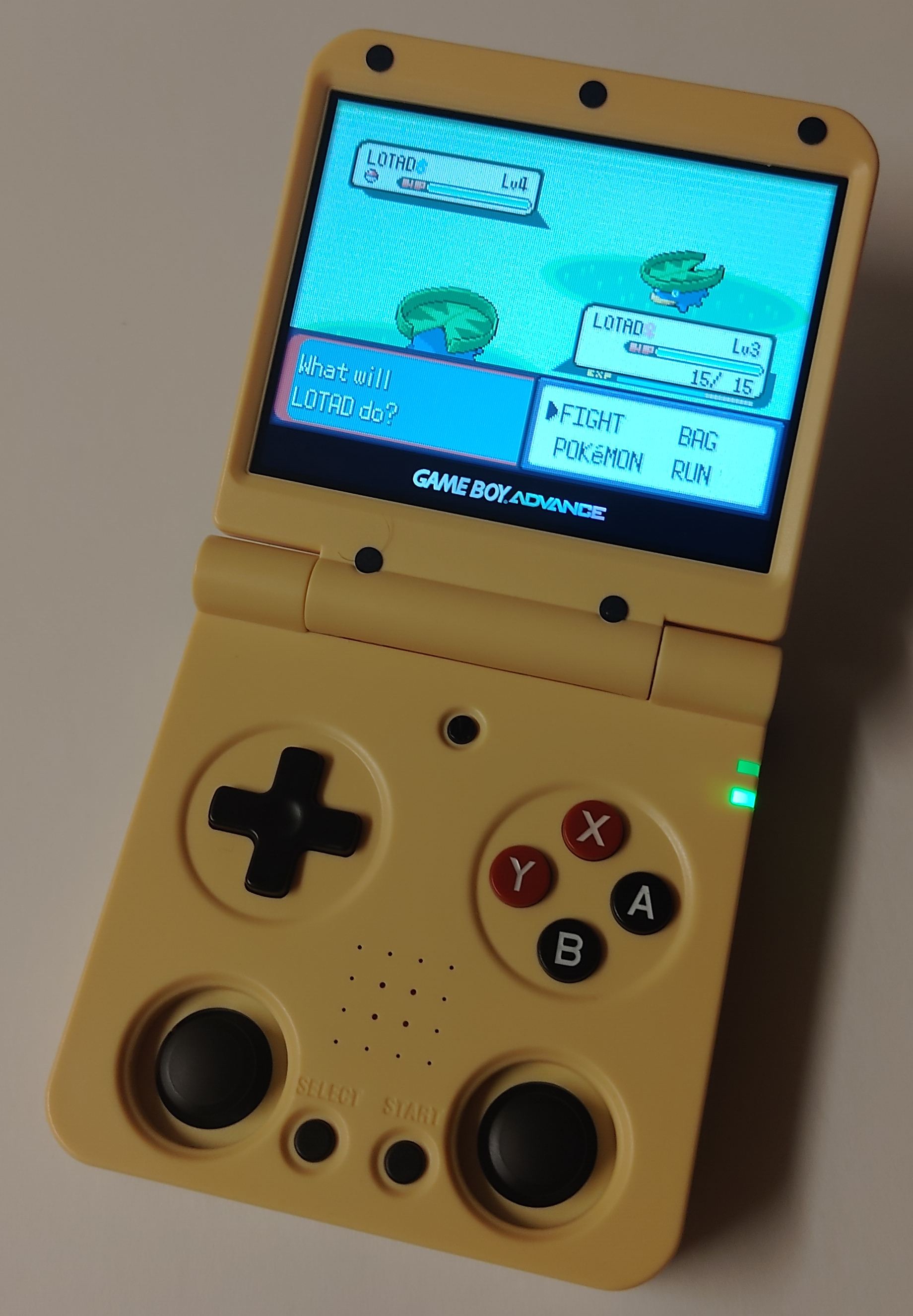Jacen's Blog
Could This Be My New Daily Carry? - Miyoo Flip Review
November 17, 2025

Of the handhelds I've written about, none of them have really felt worthy of a spot in my pocket. Either the form factor didn't lend itself to being pocketable or the size was just too big. However, when I got my hands on the Miyoo Flip V2, it replaced my normal companion, the 2DS XL. The only question is if it's good enough to maintain its position or if I'll end up crawling back to the 2DS. Only one way to find out.
The Unboxing
The box that the Flip comes in is small, but it's filled to the brim. Inside, you'll find the device itself, a USB-C-to-A cable, a screen protector, a microSD card if you ordered it, and a microSD card reader, all packed into a nice little carrying case.
Not that I suspect you'll need the case. The clamshell and small size make the Flip a very pocketable device. Unsurprisingly, it's much smaller than the 2DS, and, while slightly thicker than the 2DS, it's only barely.

Tangentially, I chose the yellow variant since I thought it would be a fun color, but the shade of yellow they use is a lot more dull than I was expecting, and I probably should have gone with the gray for the full retro aesthetic.
The microSD card I received claims to be from Kioxia, so take that how you will, but you'll probably want to have a spare one ready just in case.
The Hardware
The gimmick of the Flip is the GBA SP form factor, including a clamshell design. I love clamshell handhelds since they keep the screen and buttons protected. That makes the Flip more pocketable than the other handhelds I've checked out.
Speaking of buttons, the Flip has all the inputs you might expect. You have four face buttons positioned in the Nintendo layout, a d-pad, two analog sticks, start and select buttons, a menu button, and two sets of shoulder buttons. The face buttons are on the clickier side, so if you're not a fan of membrane buttons, you'll be happy with these. The spacing of the buttons is a bit cramped, but I didn't really have any discomfort with the ergonomics, which is probably helped by the Flip's light weight.
As for I/O, the Flip provides two USB-C ports (one for power and one for data), a 3.5 mm headphone jack, two microSD card slots, and a Mini HDMI for video output. Miyoo apparently intends this to be used for connecting the device to a TV, with one of the USB-C ports being used for controller input. While this is a creative solution, I'd rather just have DisplayPort Alt Mode on the USB-C for a much cleaner setup. Sometimes less creativity is better.
Under the hood, the Flip is powered by a Rockchip RK3566 SoC and 1 GB of RAM. If this seems a bit underpowered, that's because it is. However, for what the Flip is trying to do, it's enough to get the job done (more on that later).
The internals of the Flip are accessible with just four Philips screws. Overall, the parts seem easy to access, so if you can find compatible replacement parts, you should be able to perform your own repairs if needed.

Attached to the bottom casing, you'll see the 3000 mAh battery. While Miyoo doesn't provide an estimation on battery life, by my basic testing, I'd expect to see around 3 hours of heavy gaming, depending on your brightness and what games you're playing.
Unfortunately, I had some issues with the battery, specifically when it came to charging. I had issues getting the battery to charge when the system was in sleep mode. This is solvable by leaving the device open while it's charging, but it's still a bit of an annoying bug. I also had some issues with power supplies. I wasn't able to get the Flip to charge on my multi-voltage power supplies, only gettinf it to work on a dedicated 5V brick. This makes it seem like the USB-C port isn't negotiating voltage correctly. While 5V bricks are cheap, it does mean that you might have issues charging with a standard phone charger, which is pretty annoying.
Sound is provided by a single front-firing speaker that sits between the face buttons and the d-pad. To put it kindly, you'll want to use headphones. Even for retro gaming, the speaker is incredibly disappointing.
The Software
The Flip's stock firmware is Linux-based, although I wasn't able to tell what project the firmware was based on. Running Linux is definitely a big advantage for the Flip, making it very hackable. While I'll be sticking with the stock firmware for the purposes of this review, there are plenty of third-party options available, and it's not a bad idea to use a fresh install of one of those given the untrusted nature of a device like this.
Despite its fairly lackluster stats, performance across the board is perfectly adequate on the Flip. Of course, this is partially because the most modern emulator on the device is the PSP. Speaking of, the PSP is where performance is the worst, with minor hitching during gameplay. Even GBA gameplay didn't feel completely smooth, but it was minor enough that it was hard to tell if my issues were real or imagined.

I would like to bring special attention to the DS emulation. The Flip comes with the Linux version of DraStic to handle the DS. The first question you might have is how touch input works, since the Flip doesn't come with a touch screen. This is handled with a cursor that is controlled using the left stick, with the R2 button used as a "click". The second question is how the screens are split on such a small display. The answer to that is "they aren't". You'll have to manually swap between screens using the L2 button. Overall, playing DS games is not the most optimal way to use the Flip.
Notably, the Flip is missing a Moonlight client for game streaming. While this is relatively minor, it does reduce the usefulness of the handheld a bit. Having an almost limitless game library would be a great way to expand the usefulness of the Flip.
Conclusion
As I've said, the Miyoo Flip is definitely the most pocketable of the handhelds I've tried. Unfortunately, the weak specs and lack of modern emulation options make it a bit unhelpful for my needs, especially since the DS is the era of gaming I have the most nostalgia for. Combined with the lack of a Moonlight client making it unsuitable for game streaming, this isn't really a handheld I can recommend.
